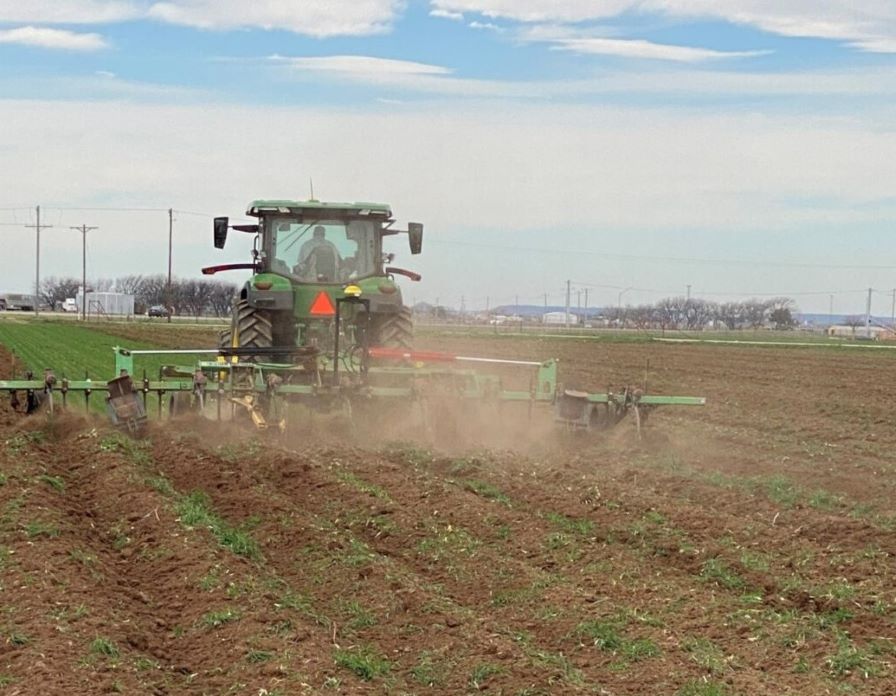China Plans For More Domestic Production
Cotton-producing countries around the world look to China’s burgeoning spinning and textile industry as the new market behemoth that will demand raw cotton from the world market. While it is true that China’s textile industry will probably always be a cotton deficit country – needing to import raw fiber to meet its demand – Chinese government leaders plan to increase their self sufficiency for the future.
Hoping China will bolster its production and rely less on foreign imports, Shuping Ma with China’s Ministry of Agriculture believes increasing cotton production is the key to protecting China’s position in the world textile market.
“At present, 40% of cotton used for the national textile industry counts on the international market, which outnumbers the average proportion in this field. It is a risky matter that the textile industry, being a traditional national pillar industry with relative advantages, should rely on internationally supplied raw material,” Ma said in a paper delivered at the 2007 China International Cotton Conference in Urumqi.
“For one thing, the cotton resource on the world market is by no means infinite; for another, there is such unpredictability in the international political world. Thus, a stable development of domestic cotton production is the determinant safeguard of the sustainable and healthy growth of China’s textile industry.”
While the textile industry could receive a strategic advantage from domestically grown cotton, Chinese production would stimulate other areas of the economy as well, especially employment in rural and agriculture areas. According to the Ministry of Agriculture, there are currently 40 million permanent cotton farmers and 150 million people involved in some capacity of cotton production. However, with 1.3 billion people in the country and millions of people in need of work, an increase in cotton production would provide jobs to rural migrant workers.
“Currently, the country feels great pressure on its social employment with 250 million extra labor force in the rural area, of which 115 million people go out of the countryside to work every year, and the rest of the 100 million or so stay jobless. A stable development of cotton production offers an effective solution to handling the tough problem of social employment,” Ma said.
Implementing a Strategy
Deciding to increase production of raw cotton fiber is the first step; implementing a plan that will yield success is another. To increase its domestic cotton production, China must develop more acreage and make use of technology – both in seeds and in production practices.
For 25 years, China’s total cotton acreage averaged 78 million acres, with approximately 80 million acres planted this year. The Ministry of Agriculture believes an average of 85 million acres could be sustained, with even more acreage available in some years. Better crop management and rotation could allow the government to hit this target, but it would take wide-scale cooperation and planning within growing regions.
“Still some (cotton) space can be recovered and expanded on the basis of the present situation of the tillage in the main cotton production areas in the following ways: the back-up tillage can be used for cotton production in the Northwest inland; in the Yellow River valley, we can further expand the cotton area by using some wasteland or salty soil or re-adjusting the planting area of some sundry food and bean acreage; in the Longest River area, the solution is to change the rotation of agricultural products and foster cotton after wheat and rape harvest,” Ma said. “China’s cotton area can be maintained at the level of 85 million acres with a stable cotton market, a reasonable price, effective policies and sufficient profit from cotton planting.”
Even if cotton acreage increases, land is finite, and China will have to increase cotton yield per acre if it wants to produce more cotton domestically. In 2005, Chinese farmers planted 53 million acres, or 70% of their cotton, with insect-resistant technology, and Ma said this would continue to grow as research develops even better technologies. Breeding programs and new varieties will also improve cotton yield, and production practices such as drip irrigation and improved seeding rates will increase domestic fiber production as well.
China will never be a totally self-sufficient cotton producing country. But with industry improvements and proper management, it could produce 15 million more bales in the future. That would be a boon for China, but it would shrink an export market that many global cotton producers and merchants depend on.
Add photo to caption:
Delegates at the 2007 China International Cotton Conference tour a state-owned cotton field in the Xinjiang Autonomous Region. China plans to increase its cotton production to 85 million acres in the future.









